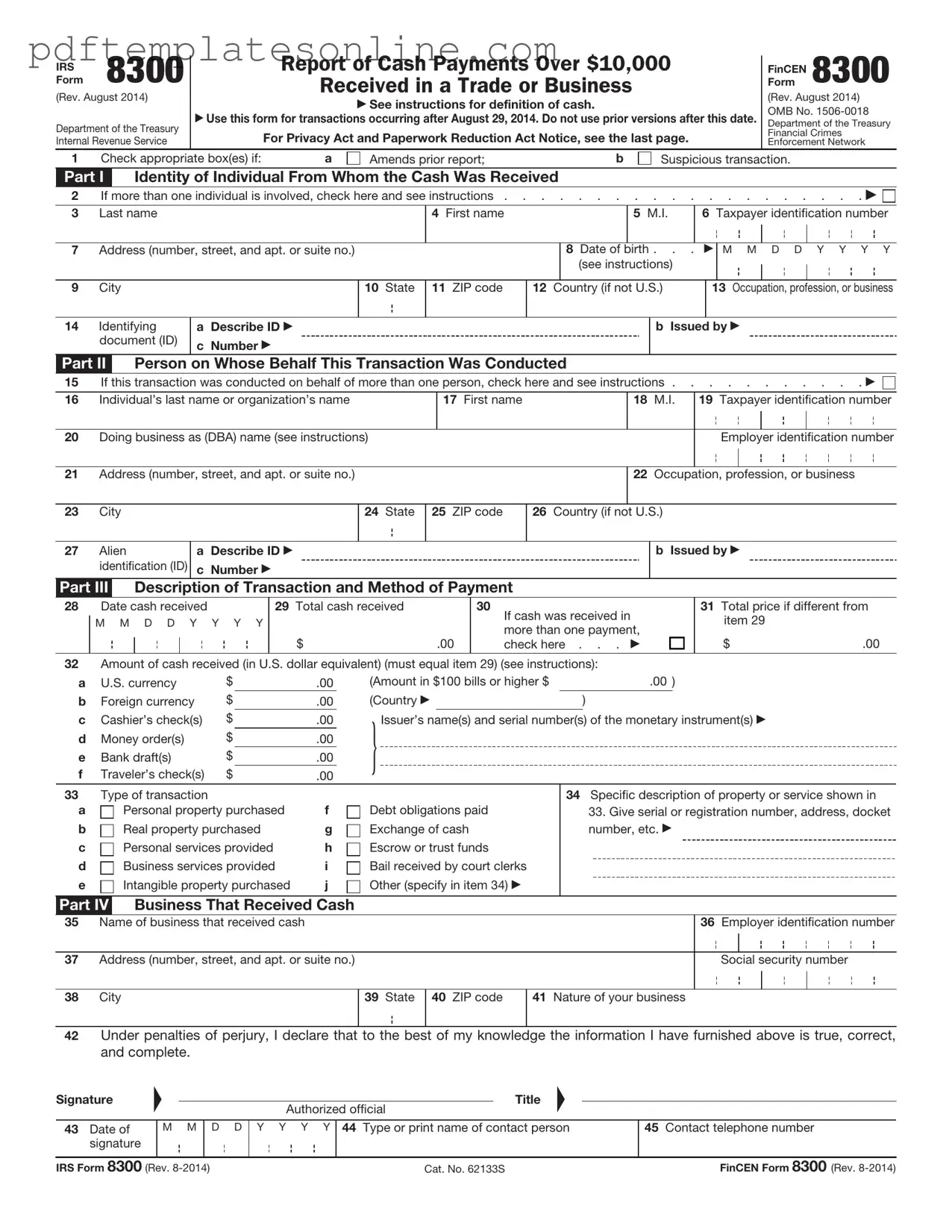When completing the IRS Form 8300, individuals often make several common mistakes that can lead to delays or complications in processing. One frequent error is failing to report all required information. The form requires detailed information about the transaction, including the identity of the payer, the amount received, and the date of the transaction. Omitting any of this information can result in a form being returned or rejected.
Another mistake involves incorrect identification of the payer. The form mandates that the name, address, and taxpayer identification number (TIN) of the individual or entity making the cash payment be accurately recorded. If any of these details are incorrect or incomplete, it may cause issues with the IRS and can lead to penalties.
People also often misinterpret the definition of cash for the purposes of this form. Cash includes not only physical currency but also other forms of payment such as checks, money orders, and electronic transfers. Failing to recognize this can lead to underreporting and potential non-compliance with IRS regulations.
Additionally, individuals sometimes neglect to file the form within the required timeframe. The IRS mandates that Form 8300 must be filed within 15 days of receiving cash payments over $10,000. Late submissions can incur fines and may trigger further scrutiny from the IRS.
Another common issue is not keeping adequate records. The IRS recommends maintaining copies of the completed Form 8300 and any related documentation for at least five years. Without proper records, it may be difficult to substantiate the information reported on the form if the IRS requests further clarification.
Lastly, individuals might overlook the importance of training staff involved in cash transactions. Proper training ensures that all employees understand the requirements for completing Form 8300 accurately. This can help prevent errors and ensure compliance with IRS regulations.
